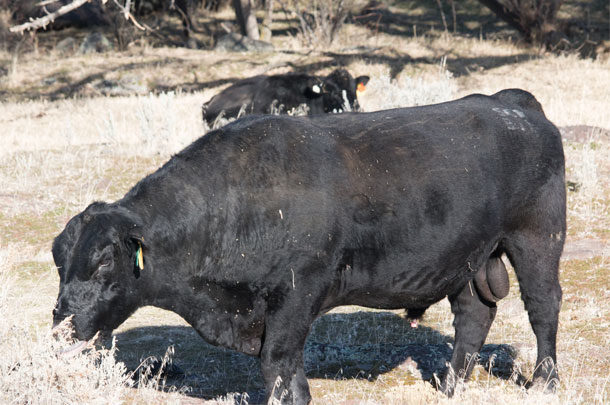The financial success of your operation depends on one day of the year. We ask a cow to gestate for nine months, lactate for seven months and recover from calving in 45 days to maintain one calf per calendar year.
In most cases, the cow’s busy schedule comes down to 24 hours of standing estrus to achieve our goal of producing a calf every 12 months. In the cow-calf sector, we tend to focus on nutrition to make the cow perform. But good cow management doesn’t matter if we haven’t taken care of the bull!
Good bull nutrition isn’t much different than managing a pre-calving cow. The primary goal is to manage body condition to target a body condition score (BCS) of 6 at the start of the breeding season. This means providing adequate protein and energy to support maintenance and adapting nutrients offered to correct body condition challenges.
Much like a lactating cow going into the breeding season, a bull’s activity increases along with his energy requirements. Supplementing nutrients during the breeding season can be difficult, so it is essential to start the bull off in optimal working condition at the beginning of breeding.
Research suggests undernourished bulls exhibit reduced libido and decreased ejaculate volume. These same effects can also be seen with bulls that are overly fat. For optimal fertility, we need the bull to be in good condition, but not overly fat, to maintain libido and activity. When body condition is not adequate and supplements are used to add bodyweight before the breeding season, remember bulls are maintaining 30 to 40 percent more bodyweight than a cow and requirements for maintenance and growth will adjust accordingly. This means it often takes more pounds of feed to correct body condition on a thin bull than it would a thin cow.
Outside of managing body condition through good protein and energy nutrition, it is important that vitamin and trace mineral status exceeds what the bull needs. Good trace mineral nutrition is essential to bull fertility and should be practiced year-round. Vitamin E and selenium supplementation are also good tools to improve bull fertility.
Remember the same principles apply to the bull as the cow. For example, if we are applying additives or specialty trace mineral sources to combat forage antagonists on our farm, the bull is also exposed to those same challenges and should be treated accordingly.
While nutrition for the bull is important on our ranch, it is equally important to understand the bull’s nutrition program during development. Most seedstock operators do a good job of growing bulls, but a bull that is fed diets too high in energy during growth and puberty can experience impaired reproductive performance. Research has shown when dietary energy is too high in developing bulls, testicle development can be impaired, having lasting effects on ejaculate volume and semen quality. In addition to semen quality, bulls fed very high-energy diets could also see reduced longevity as a breeder due to feet and joint issues. While the 5-pound daily gains might look impressive, it likely reduces the bull’s longevity in your operation and increases his cost of servicing a cow.
Quiz your bull supplier on his bull-development feeding program. If he is pushing bulls with high-energy or starch-dense diets, be cautious of the bulls that are over-conditioned on sale day. For every seedstock producer, the number one priority is to make a fertile bull that becomes a satisfactory breeder for your operation. As a cow-calf producer, your first and foremost goal is to get cows bred. If a bull supplier’s number one goal is to make bulls look good on sale day, their priorities may not be in line with yours.
General management is also critical to developing satisfactory breeders to support a successful breeding season. Don’t forget the bull in your general vaccination and parasite management program. Complete breeding soundness exams prior to every breeding season to verify fertility with enough time to react if a bull fails. Make sure the bull-to-cow ratio is appropriate for your operation. Take into account bull age, breeding pasture size and reproductive synchrony when determining the number of bulls needed to breed your cows.
Good bull management is a must to achieve the reproductive goals of your operation. Don’t let a train wreck be the bull’s fault.
PHOTO: Diets high in energy can help improve development, but can also reduce longevity of the bull in your operation. Staff photo.











